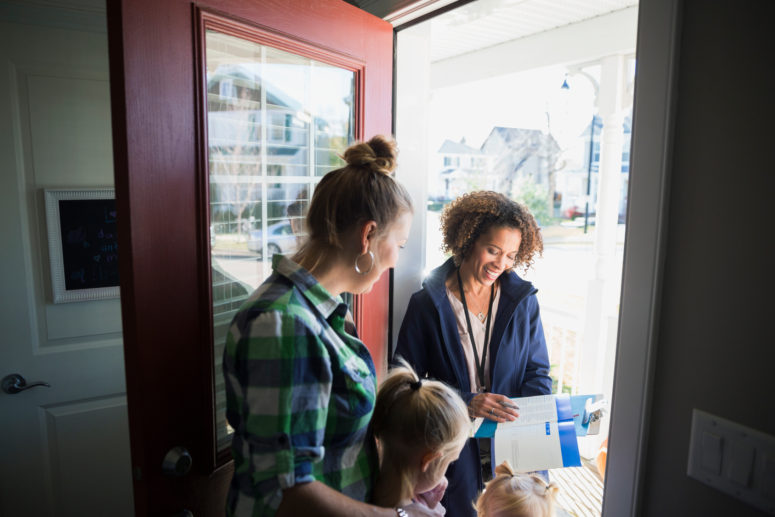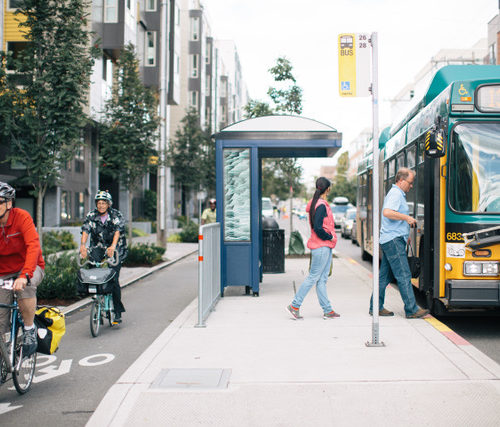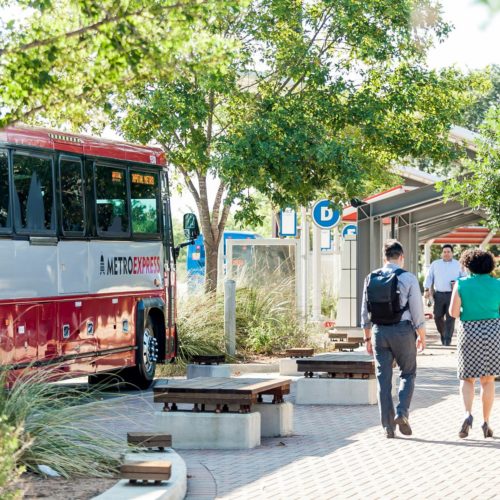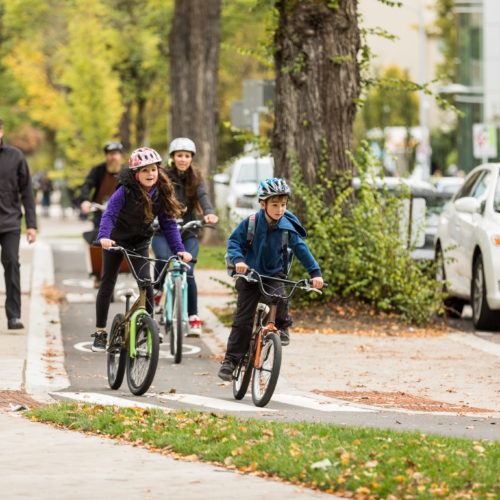Using audience research and tested strategies, City Thread helps craft inclusive messaging that challenges the status quo.
By Zoe Kircos, City Thread Partner
Messaging is everything.
It’s the medium by which we convey ideas, helping to tap into people’s emotions and draw support for any given cause. Messaging is also the reason why campaigns succeed or fail — how you talk about issues either resonates with a majority of people or falls flat. It should come as no surprise that successful messaging reaches new audiences by appealing to the things they care about, helping people make connections between a particular outcome and their own lives.
We could all be more intentional, thoughtful, and open in communication with each other and particularly those with whom we don’t agree. Unfortunately, in the past few decades, dialog in this country has become increasingly divided along political lines, with factions preaching to the choir on each side. Likewise, U.S. bicycling advocates have done a poor job of talking about safe, comfortable, convenient bike networks to those who don’t ride – or don’t ride much. Without the support of as many residents as possible, it’s difficult to get local projects off the ground — let alone spark widespread mode shift. Our work at City Thread bucks this trend.
In cities across the country, City Thread has had proven success in building broad public support for and passing ballot initiatives to fund mobility networks. We’ve done it using audience research and tested messaging, using the same strategies we see from top campaign communicators. Our team is especially adept at communicating with folks who don’t bike or take transit and never will. We can frame complete mobility networks as something that benefits all people using our streets.
“A lot of the messaging that fails to build broad support for bike lanes or a fully connected network focuses on how it will benefit people on bikes and not on the benefits for the larger public,” says City Thread Partner Sara Studdard. “Our team has proven success using research and tested messaging in talking with people from all backgrounds — we’re able to communicate how a mobility network can be a solution for that resident who will always drive.”
Know who you are talking to.
Audience research is a key component of any successful messaging campaign. Designed to help establish the size, composition, and characteristics of a group of individuals, audience research is essentially a way to study the people you want to reach. Without an understanding of who you’re talking to and what it is they want, it’s nearly impossible to create content that will be effective. Good audience research will not only help you understand what it is people want but it will allow you to tailor messaging depending on who you’re speaking to.
For a mobility project, you might start with a large sample in order to identify the people who are already in favor of mobility networks, those who don’t hold strong views on transportation options, and those that will never use one, no matter what. In Austin, Texas, the advocacy organization MoveATX found that 40% of citizens would never support mobility networks but that 60% were open. The next step — one that Move ATX took (more on that in a later blog) — was to conduct more in-depth audience research on that 60% of people, its target audience.
A target audience or a voting block will never be of one mind and any sample will contain nuance. For example, of the 60% of people favorable to mobility networks, some may be avid bikers while others might just want safer communities where their kids can walk, bike, and play. Others could be drivers that like the idea of having less congested streets, while a different subset of people might be convinced by the economic, environmental, and public health benefits a connected mobility network offers.
In the last few years, many examples outside of the transportation space have showcased local organizers using inclusive messaging to speak to a larger target audience in a holistic way, activating support and securing wins for what local majorities wanted. These examples include organizers as diverse as Kansas’s pro choice advocates to California’s affordable housing coalition.
The pro-choice campaign focused not strictly on abortion access but on the idea that decisions about pregnancy and women’s health should not be made by politicians, nor should women’s rights be taken away. Ultimately, the campaign was successful in garnering enough support to defeat the state’s abortion ban.
“We actually did talk about abortion a lot, but we talked about it in a different way,” Ashley All, the senior director of Kansans for Constitutional Freedom, which led the pro-choice campaign, told The New Yorker. “We talked about a much broader set of values that a lot more Kansans shared.”
Those values included a right to freedom and being against government interference, especially when it came to people’s personal medical choices. In the case of the California housing coalition, advocates promoted the idea of a more affordable California for current and future residents — a California where people had choice and were treated with respect. In both of these cases, successful messaging meant rallying a large group of individuals around a shared purpose by communicating a value proposition for people’s day-to-day lives (even if they won’t directly benefit from the issue at hand).
“It’s the same with bicycling — we need to speak to drivers about how mobility networks offer more choices,” says Kyle Wagenschutz, another principal at City Thread.
“Great messaging isn’t what we want to say, it’s what people want to hear consistent with who they are. It requires us to align their needs with the values and shared goals of the campaign.”
This high-quality communication does not come cheap. While $50,000 for surveys might seem better spent on a part-time staff position, an upfront investment in audience research can inform a city’s messaging and future communications spending for years to come, ensuring you don’t waste money down the road on campaign slogans that won’t sell or infrastructure that won’t actually serve people. Before investing in social media campaigns, ad spends or canvassers, you need to make sure you’ve done the research so that you’re not just talking at community members, you’re connecting to them emotionally and inviting them to join you with a call to action.
“We invest in good communications because there’s an opportunity for change and we want residents to be a part of that change,” says Studdard, noting that good communications bring more people into the campaign. “It comes down to understanding what messaging is unique to your cause and will resonate with a broader audience, and then working to recruit diverse stakeholders to your cause.”
In the U.S., our city systems are set up to reward people for voicing opposition, without creating a good way to amplify support — and misinformation and misaligned media messaging don’t help.
Plus, cities are often working with limited staff on small budgets and are forced to justify every project and policy. The result is that city communications tend to focus on updates and accomplishments rather than inviting people in and building support around the larger work they’re doing.
What we’re focused on at City Thread is a more holistic communications strategy, one that makes it easy for people from all backgrounds to join what might otherwise seem like a very specific cause. Our communications cast a wide net, giving people the opportunity to support something they might not have otherwise seen as relevant to their lives. Our methods are all about making something specific more relevant to the masses, allowing more people to be heard in public discourse and around the work cities are doing.
“Cities are communicating about so much, so to advance transportation work takes a focused funding source and effort that cities usually aren’t able to tap into in meaningful ways,” says Wagenschutz. “Our communications work helps cities showcase how the work they’re doing is helping to make the community better overall.”
Let’s talk about the opportunities in your community and how we can work together. Reach out at info@citythread.org.





